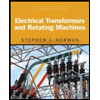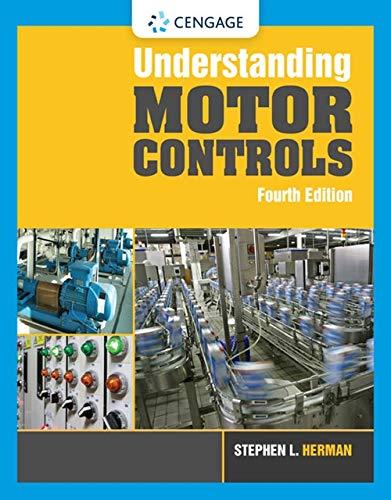
Concept explainers
True or False? The strength of the magnetic field in an electromagnet increases with an increase in the number of turns of wire and the current flowing through them.
Whether the given statement is true or false.
Answer to Problem 1RQ
The correct answer is TRUE.
Explanation of Solution
Given information:
The strength of the magnetic field in an electromagnet increases with an increase in the number of turns of wire and the current flowing through them.
The magnetic field exists around every magnet. By placing an iron bar inside the current carrying wires an electromagnet is produced. The strength of the magnetic field of these electromagnets is directly proportional to the number of turns of wire and the current flowing through them. So the above statement is true.
Want to see more full solutions like this?
Chapter 18 Solutions
Tech Manual for Erjavec's Automotive Technology: A Systems Approach
- How can the polarity of an electromagnet be determined if the direction of current flow is known?arrow_forwardWhat determines the strength of the magnetic field when current flows through a conductor?arrow_forwardThe south pole of one magnet is brought close to the south pole of another magnet. Will the magnets repel or attract each other?arrow_forward
- 10 cm 1.25 100 0.05 em 30 om 6.75 0.30 625 10 cm 00 1000 Magastaing inoway (A Ts 10 cm 30 cm- A two-legged magnetic core with an air gap is shown in Fig.1. The depth of is 5 cm, the length of the airgap is 0.08 cm, and the number of turns on the coil is 800. The magnetization curve of the core material is shown in Fig.2. The magnetic field density in air gap is 0.7 T. What is the total MMFin A-Turns required to magnetize both the iron core and airgap? Nas deasiy B(Tarrow_forwardDC and AC subject: 1. Consider a wire carrying a current in the presence of a magnetic field, and a given flux density of 0.25 T. If the wire is 1.0 m long and carries a 0.5 A current, what is the magnitude of the force induced in the wire? 2. The wire shown is moving in the presence of a magnetic field. With the information given in the figure, determine the magnitude and direction of the induced voltage in the wire. (see the figure below)arrow_forwardThree inductors are connected in parallel. Inductor 1 has an inductance of 0.06 H; inductor 2 has an inductance of 0.05 H; and inductor 3 has an inductance of 0.1 H. What is the total inductance of this circuit?arrow_forward
- Figure 1 of 1 F = 30 N 4. E=50 N 20° F = 20 Narrow_forwardThe current in a component is reduced uniformly from 100mA to 20mA over a period of 8.0s.What is the charge that flows during this time? Оа. O a. 480 mC O b. 640 mC Ос. 320 mC O d. 160 mCarrow_forwardFILL IN THE MISSING WORDS (some words may be used more than once) aluminum atomic bars conductivity conductor copper electricity gold insulators made metals power lines resistance sheets silver spans supports weight wire tubes 1. The electrical structure of the material from which the 2. 3. Some 4. 5. of matter is dependent upon the is have an extremely high such as high-tension are better conductors of is the best conductor, followed by and is used where between 6. Conductors are usually found in the form of forms of or to the flow of than others. is a major consideration, with long but may be in the 33arrow_forward
 Automotive Technology: A Systems Approach (MindTa...Mechanical EngineeringISBN:9781133612315Author:Jack Erjavec, Rob ThompsonPublisher:Cengage Learning
Automotive Technology: A Systems Approach (MindTa...Mechanical EngineeringISBN:9781133612315Author:Jack Erjavec, Rob ThompsonPublisher:Cengage Learning Electrical Transformers and Rotating MachinesMechanical EngineeringISBN:9781305494817Author:Stephen L. HermanPublisher:Cengage Learning
Electrical Transformers and Rotating MachinesMechanical EngineeringISBN:9781305494817Author:Stephen L. HermanPublisher:Cengage Learning Refrigeration and Air Conditioning Technology (Mi...Mechanical EngineeringISBN:9781305578296Author:John Tomczyk, Eugene Silberstein, Bill Whitman, Bill JohnsonPublisher:Cengage Learning
Refrigeration and Air Conditioning Technology (Mi...Mechanical EngineeringISBN:9781305578296Author:John Tomczyk, Eugene Silberstein, Bill Whitman, Bill JohnsonPublisher:Cengage Learning Understanding Motor ControlsMechanical EngineeringISBN:9781337798686Author:Stephen L. HermanPublisher:Delmar Cengage Learning
Understanding Motor ControlsMechanical EngineeringISBN:9781337798686Author:Stephen L. HermanPublisher:Delmar Cengage Learning



